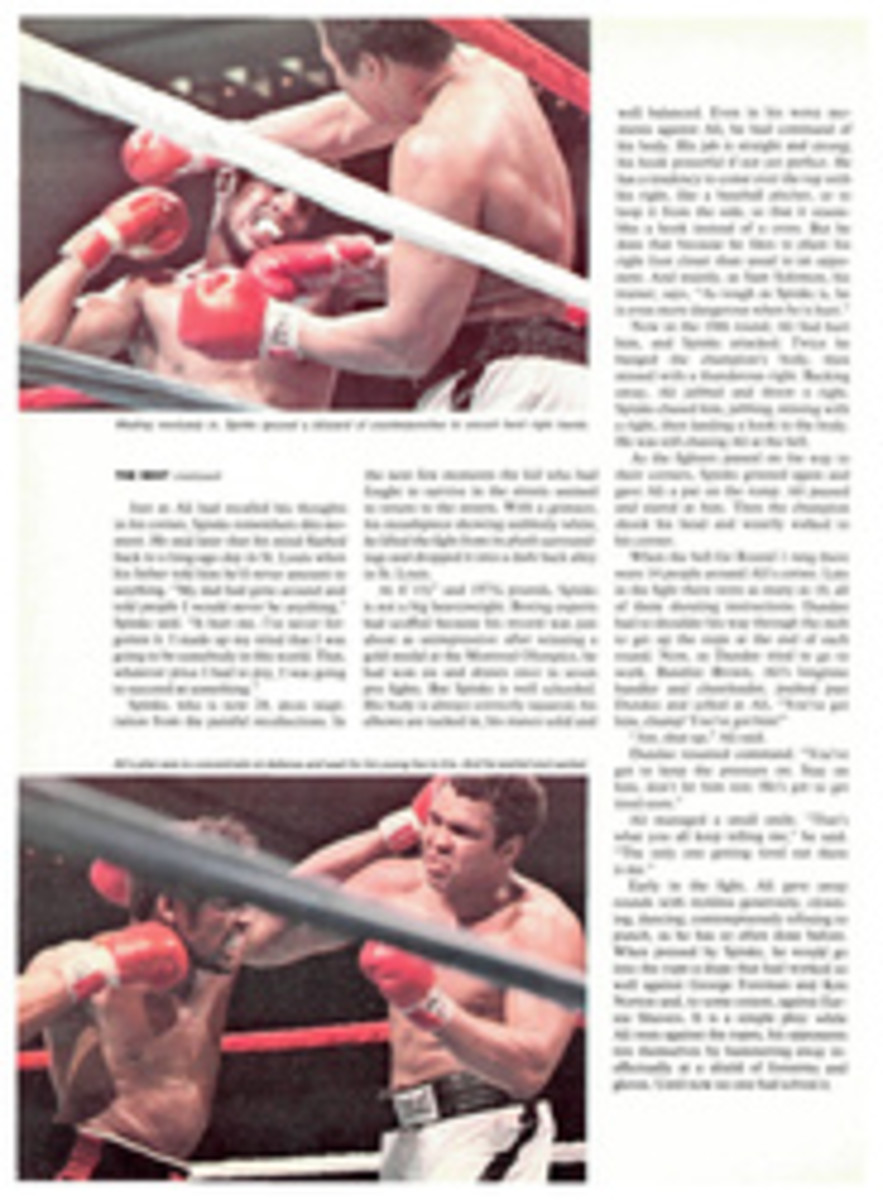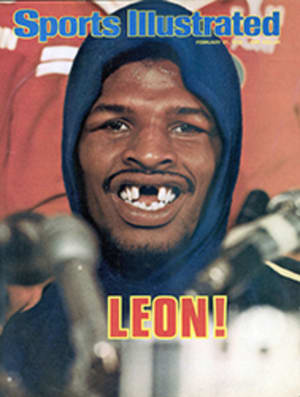
Reawakening the glory
The other patriarchs of college basketball—Allen, Rupp, Iba and Wooden—are dead or retired, but Ray Meyer of DePaul endures. He is 64 years old, he has been at the small Catholic school on Chicago's Near North Side for 36 seasons, and he has won 566 college games, more than any other active coach and more than all but six men who ever diagrammed a play. And now, in what could be his next to last season, he may have his best team of all.
After defeating Wisconsin-Green Bay, a Division II school that had won 23 straight, and intracity rival Loyola last week, the Blue Demons were 22-2 and ranked eighth in the nation. They have beaten Notre Dame and Creighton on the road and Providence at home. They have been defeated only at LSU (where even Kentucky lost) and at Marquette (where everybody loses). Two more points here and seven more points there, and DePaul would be unbeaten.
Meyer refuses to say that this is the best team he has ever had. Until three weeks ago he had not even voted for it in the UPI Coaches' Poll. But he does say that he has never enjoyed coaching a team more, though 14 of his squads have played in postseason tournaments. "We don't have as much talent as a lot of other teams," he says, "but this is more talent than I've ever coached. In other years I had to fire them up with pep talks before every game. This one wins on ability."
Meyer has changed in more ways than curtailing his locker-room oratory. Although he can still tear into a referee, he claims he has mellowed over the years, that he relates to players better, that he does not demand as much from them. "I was a dictator," he says. "Before a big game I might scrimmage for two hours. After a loss I might wait until the gym cleared and make the team practice." He chuckles. "Mikan might not even recognize me the way I am now."
Mikan. Always there is the specter of 6'10" George Mikan, who played on Meyer's first four teams, 1943 through '46, and was the first of the dominant big men in both college and pro basketball. The Mikan era, forever hallowed at DePaul, produced 81 wins and an NIT championship—when an NIT championship was very special. Those years are a convenient gauge against which to measure the last four seasons, because during that time another very tall player, 6'11" Dave Corzine, has led the Blue Demons to 72 victories.
The current DePaul players tire of the comparisons between Mikan and Corzine, and the four other starters marched into Meyer's office recently to remind him that Corzine was not the only player on the team. But it is not the coach's fault. Comparisons—and confusion—are inevitable.
For instance, last week, referring to a plaque on his desk that reads: DESIRE DETERMINATION DEDICATION THE WINNING EDGE, Meyer said, "Mikan gave me that. No, I mean Corzine." Mikan, Corzine. What's the difference?
There is no confusing the impact Corzine has had on DePaul basketball. "He turned our program around," Meyer says. "He's the first high school All-America we've ever had, so I knew we'd be good the minute we got him. He has far more natural ability than George had, but George worked harder and developed more. I've always told Dave he could do better."
Corzine went to DePaul because he wanted to play college ball close to his suburban Chicago home. Though he was generally considered a prize catch, some schools questioned his desire. That reservation seemed well founded when, as a sophomore, Corzine told Meyer that too much was being expected of him. His progress since then has proved him and his critics wrong. This season he is doing everything that could be expected of a player, he leads the Demons in scoring (20.2), rebounding (11.2) and assists (4.5) and is shooting better than 50% for the first time in his career.
"Dave never believed he could be as good as he is," Meyer says. "This is the first year he has thought he could really play pro ball."
Corzine has improved his disposition as well as his skills. "In previous years I tried to be fantastic, and if I wasn't, I got very frustrated," he says. "I came into this season with the attitude that I would play as hard as I could, and if I didn't do well, I'd forget about it. I don't worry anymore that I might let everyone down. When I shot 0 for 12 against Duquesne this year it didn't bother me because we won by 25 points. In the past I would have gone crazy."
The big center is flanked by a pair of three-year starters at forward, burly Joe Ponsetto, the second-leading scorer and rebounder, and Curtis Watkins, the Demons' most accurate shooter. The guards are Gary Garland, who has shown pro potential as both a player and singer—he is Dionne Warwick's cousin—and Randy Ramsey, a walk-on who takes defense so seriously that Meyer says, "If you score on him, he'd like to break both your legs." Another reason for DePaul's success has been the play of Forward William Dise and Guard Clyde Bradshaw. who have come off the bench to combine for 16 points a gàme.
Players like these have sparked new enthusiasm for basketball at DePaul. The games are still played in 5,300-seat Alumni Hall, which looks like a high school gym. but the crowds have grown from an average of 1,500 four years ago to 4,500. "People are coming to see us now and not some big-name opponent like Marquette or Notre Dame," says Meyer. "That's the big accomplishment of the year."
There have been some other significant changes in the last four seasons. The school now has its first full-time sports-information director in Marty Hawkins (at least he is full-time when he is not assigning handball courts and renting out lockers) and an enterprising athletic director in Gene Sullivan. A former Notre Dame assistant coach, Sullivan has lined up radio and television coverage of the Demons, and he saw to it that Ramsey would be eligible to play in the NCAA tournament, to which DePaul is sure to receive a bid.
Ramsey, who did not play as a freshman, would have been ineligible under NCAA rules for postseason competition as a fifth-year senior. But Sullivan pushed through a retroactive change at the NCAA convention in January that permits the redshirting of freshmen. "I really did believe the rule should be modified," Sullivan says, "but I didn't bother to tell anyone exactly why I felt so strongly about getting it done this year."
This kind of wheeling and dealing seems out of place at DePaul. An hour before a game the players start wandering onto the court, where they finish putting on their socks and sneakers, sign autographs and casually throw up practice shots. This kind of informality would just not do at Marquette or Notre Dame, Midwestern Catholic independents that have long overshadowed DePaul. When the Blue Demons upset the Irish 69-68 in overtime two weeks ago, thereby ending Notre Dame's 22-game home winning streak, Meyer was deluged with congratulatory phone calls, letters and telegrams. A sign at the Wisconsin-Green Bay game said: DEPAUL HAS FAME, IT BEAT NOTRE DAME.
After 563 victories, Meyer probably never imagined that one more would be needed to gain renown. And to his mind, there have been other moments more worthy of cherishing, such as the coaching convention in Atlanta last year when he sat on the podium between Rupp and Wooden and reminisced about basketball. "I felt proud just to be there," he says. "It made me feel like I was somebody."
He was, and as this year's team proves, he still is.
PHOTO
Ray Meyer has not gotten 566 wins, the most by an active coach, by meekly accepting the refs' calls.

